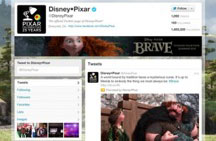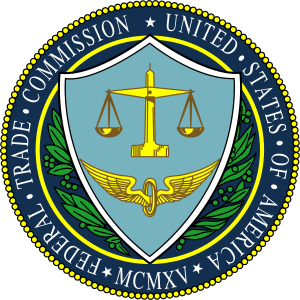Twitter Launches Brand Pages
 Today, December 8, 2011, twitter officially announced that they have launched brand pages for their popular social networking platform, just one month after Google announced the launch of their Google+ Brand Pages.
Today, December 8, 2011, twitter officially announced that they have launched brand pages for their popular social networking platform, just one month after Google announced the launch of their Google+ Brand Pages.
The New Brand pages have 2 new key elements:
Customizable Large Header Images
The new Brand Pages can be customized with large header images that companies can use to display their logo and tagline more prominently than under the standard format.
Top Tweet Selection
Companies/Brands may also choose to keep a specific tweet at the top of the page’s time line, and that top tweet will also auto-expand to show an embedded photo or video from Flickr, YouTube or other sources, without any action from the user.
Twitter is launching brand pages with 21 Companies/Brands: American Express, Best Buy, Bing, Chevrolet, Coca-Cola, Dell , Disney, General Electric, Heineken, Hewlitt-Packard, Intel, JetBlue, Kia, McDonald’s, Nike, NYSE Euronext, Paramount Pictures, PepsiCo, Staples, Subway, and Verizon Communications Wireless.
The new design also lets brands separate their @ replies and mentions.
The Dark Side of Social Media in 2011
 With Social Media rising in heaps and bounds, everybody should be excited with all of the changes that are happening, right? Not entirely so. Unfortunately, with the increase in popularity and the technology available, there are a lot of tricks being used in social media to dilute the personal experience.
With Social Media rising in heaps and bounds, everybody should be excited with all of the changes that are happening, right? Not entirely so. Unfortunately, with the increase in popularity and the technology available, there are a lot of tricks being used in social media to dilute the personal experience.
Social Media was designed to provide users with an interactive online experience, allowing friends and family to connect with one another whenever they wish, making the world just that much smaller. The thing is, that with the popularity of social media comes some negative setbacks that are exploiting the experience, primarily to gain popularity for commercial brands, SEO companies, and internet marketers. Rather than use social media the way it was originally intended, they ploy these tactics to drive up traffic, increase popularity, and rank better in search engines.
Now you might ask yourself: What is wrong with that? The answer I would give if consulted on the subject is: Even though these tactics are effective, they are taking the personal connection out of social media. Below I’m going to share with you some “dark side” tactics used in building audiences and you can decide for yourself whether you would use these or not. Continue reading
How to Grow an Organic Twitter Following
 Growing an organic Twitter following takes time and work, but the rewards outweigh the cost. Twitter was built to allow people to engage and share information in 140 characters or less. If you are looking to build a following with automation software or just to look popular, then this is not the article you are looking for.
Growing an organic Twitter following takes time and work, but the rewards outweigh the cost. Twitter was built to allow people to engage and share information in 140 characters or less. If you are looking to build a following with automation software or just to look popular, then this is not the article you are looking for.
The accounts I manage are growing at a steady pace with these tips and tools I share today. With some luck and the right execution, your Twitter account will grow nicely, full of real and interesting people that you can network with and promote your knowledge, product or service. Continue reading
The Top 4 Twitter Directories in 2011
 Getting listed in Twitter Directories is the first way to gain followers. By adding your Twitter profile to the right categories within these directories, you can increase your exposure to other Twitter enthusiasts and hopefully increase your following as well.
Getting listed in Twitter Directories is the first way to gain followers. By adding your Twitter profile to the right categories within these directories, you can increase your exposure to other Twitter enthusiasts and hopefully increase your following as well.
When Twitter came out in 2006, and then became popular in 2007, there were many directories created. However, over the last several years, many of the directories have disappeared, with only the largest of the directories remaining still popular today. What will make this article worth reading is the single fact that this is a list of current popular directories. Continue reading
FTC Guidelines for Affiliate Advertising on Twitter
 More often than not, when you begin to get thousands of followers on Twitter, you start to see recommendations for specific products or services (especially TweetAdder) from other people who you follow in your timeline. Did you know more often than not, the person who is tweeting the link is an affiliate for the software or service, and will be financially compensated if you signup?
More often than not, when you begin to get thousands of followers on Twitter, you start to see recommendations for specific products or services (especially TweetAdder) from other people who you follow in your timeline. Did you know more often than not, the person who is tweeting the link is an affiliate for the software or service, and will be financially compensated if you signup?
That’s right! They receive money because you clicked on their link! However, here’s something you may not know. The Federal Trade Commission (FTC) requires “that any affiliate who uses reviews, rankings or testimonials to promote products must clearly disclose the fact that they receive compensation for doing so”.
How many times do you see that law broken on your timeline in a given day?
This is not to say that you can’t advertise on Twitter, only that you must let people know you are a paid affiliate. So, the ultimate question becomes: How do I tweet my recommendation, and include the proper disclosure all in 140 characters or less?
The FTC has a document called: The FTC’s Revised Endorsement Guides: What People are Asking and on page 5, they have clearly defined how to recommend/advertise on Twitter.
Here’s the excerpt:
Q: What about a platform like Twitter? How can I make a disclosure when my message is limited to 140 characters?
A: The FTC isn’t mandating the specific wording of disclosures. However, the same general principle – that people have the information they need to evaluate sponsored statements – applies across the board, regardless of the advertising medium. A hashtag like “#paid ad” uses only 8 characters. Shorter hashtags – like “#paid” and “#ad” – also might be effective.
It really is that simple to be compliant! Being upfront with people is a good way to build trust, and in the end they may click your link and buy the product for that very reason.
Unfortunately, many people on twitter do not know or care about these guidelines. If you are unsure whether or not you are being conned into a paid link, here are some steps to check:
- Hover over the shortened URL in Twitter.
- If it contains a unique ID (id=1234) or “aff” or”affiliate” it is an affiliate link.
Please help us spread the word!
Most people aren’t even aware about this rule, and these guidelines only take a minute to execute. The FTC takes these guidelines very seriously, and the Advertiser you publish for could end up in some serious “hot water”.




